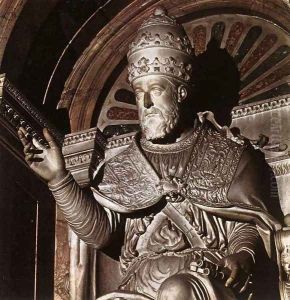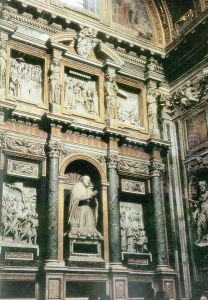Flaminio Ponzio Paintings
Flaminio Ponzio was an Italian architect who played a significant role in the development of Baroque architecture in Rome during the late 16th and early 17th centuries. Born in Viggiù, Lombardy in 1560, Ponzio moved to Rome, where he became a prominent figure in the architectural scene of his time. He is known for his collaboration with prominent artists and architects of the era, such as Michelangelo and his apprentice, Giacomo Della Porta.
Ponzio's architectural style is characterized by its grandeur and its blending of Renaissance clarity with the emerging dynamism of the Baroque. One of his most famous works is the design of the Villa Borghese on the Pincian Hill in Rome, which he undertook for Cardinal Scipione Borghese. This villa is considered a masterpiece of early Baroque garden design and architecture. Ponzio was also responsible for building the Cappella Paolina at Santa Maria Maggiore and the loggia of the blessing in Saint Peter's Basilica.
His work extended to restoration projects, which include the completion of the dome of the Church of Santa Maria di Loreto near Trajan's Forum in Rome, originally started by his mentor, Giacomo Della Porta. Ponzio's career was prolific, and he was held in high esteem by his contemporaries. He was not only an architect but also an accomplished urban planner, contributing significantly to the layout of modern Rome.
Flaminio Ponzio passed away on April 14, 1613, in Rome. His legacy continued through his pupils, like Giovanni Vasanzio, who carried on his architectural style. Ponzio's work remains a significant part of Rome's architectural heritage, influencing later architects and the development of Baroque architecture throughout Italy and Europe.

